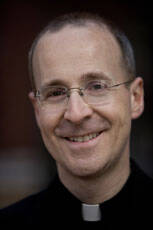I grew up just outside of Philadelphia in a small town called Plymouth Meeting. For some reason, the name of my hometown has historically proven difficult for many of my friends to remember, even those who know that it derives from the oldest building in the area, a Quaker meetinghouse. Over the years my friends have called it, variously, Quaker Meeting, Pilgrims Landing and Friendly Quaker.
The old meetinghouse was built in 1704 in a style familiar to residents of eastern Pennsylvania: walls made of a sparkly local stone called Wissahickon schist, a gently pitched red-slate roof and a broad porch that overhangs the front of the structure. The Society of Friends began its meetings in Plymouth Township as early as 1686, not long after the British crown deeded the surrounding areas to William Penn. Legend has it that George Washingtons horse slept in the stables. This was not surprising to anyone in our locale: in grammar school we learned that our neighborhood was near the site of several Revolutionary War battles. The town next to ours is named Lafayette Hill, after a rise upon which the Marquis de Lafayette camped with his troops.
To a young boy, the meetinghouse was just another building that had always been there. Yet something about it attracted me. In the cool fall afternoons, I liked to play with friends in the spacious playground of the school run by the Quakers. The late afternoon sun, filtered through the leaves of the immense trees, dappled the cement playground. They had a tire swing there, and you could also play in the stables and pretend that you were fighting the British troops.
Or ghosts and vampires. For behind the school was an ancient cemetery with thin marble gravestones, many leaning at crazy angles, inscribed with barely legible writing that told the stories of the Friends who in the earliest days of our country had lived where we now lived.
The meetinghouse was also the site of the annual Strawberry Festival held in June, where you could eat strawberries till you were bursting, and win goldfish by tossing Ping-Pong balls into their glass bowls. As a high school student, I would walk past the meetinghouse every day. Yet despite its impressive place in local history and its nearness to our house, it wasnt until I was a Jesuit novice that I ever set foot inside.
One day after Christmas, while I was home from the novitiate, a friend who had been raised in a Quaker family asked if I would like to go to a Sunday meeting. Sure, I said, not knowing what to expect.
The next Sunday I stepped over the threshold with my friend. It was a simple room with several rows of comfortable wooden benches that faced one another on a bare, clean wooden floor. From the ample windows a clear winter light poured into the space. Had I been more advanced in my religious sensibilities, I would have said that the room was monastic in its austerity. I felt at home instantly, as if I had known this place all my life.
We took our seats. The first part of the meeting was given over to prayer. By this time I knew something about contemplative prayer, but I had never done it in a group. Normally, I would pray by myself contemplatively or would pray with others during a liturgical service. It was a new experience to pray contemplatively in the company of others. For some reason, I was filled with deep consolation. Maybe it was the gathered silence, as the Quakers called it. Maybe it was experiencing the new in the midst of the old. Maybe it was just grace. But it was a surprise to experience consolation praying in a tradition different from my own.
After a half-hour, one of the Friends said, Good morning. Then a few stood to share the fruits of their prayer. After the meeting, some asked, Where do you live? I said that I lived just around the corner. And youve never been here?
Now when I pass the Plymouth Friends Meetinghouse I see it differently. It no longer seems just a quaint historical landmark, a pretty backdrop for the rest of the neighborhood. Now it is something of a symbol for me: a symbol of how something can be nearby and still remain unseen; how the oldest things can lead to the newest revelations; and of how God reveals himself in extraordinary ways in the midst of the absolute ordinariness of our daily lives.








